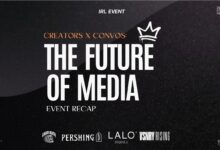NFTs – WTH Are They?

The virtual gold rush of non-fungible tokens (NFTs) in early 2021 rapidly brought this new digital asset out of obscurity and into the mainstream. It seems like NFT’s emerged from the depths of the internet onto everyone’s newsfeed, though they’d been around on the crypto/blockchain market since 2017. NFT’s are still widely misunderstood yet fascinating. Nifties, another way of sayings NFTs, are part of the blockchain world. What are they and what do they do? Why’s everyone minting and buying one?
Commonly, an NFT is understood to be a digital file or a digital collectable. Let’s take a look at how it’s more than a simple file you can create on your PC or MAC.

How is an NFT more than just a jpeg file?
It’s very technical. Here we go…an NFT is a digital asset. It can include art, audio, video, memes, books, they can even be fantasy football cards. However, an NFT is not actually the work of art or audio file itself. An NFT is:
- Blockchain-based
- 100% one-of-a-kind
- Can’t be duplicated
- Hence it’s non-fungible, it’s non-transferable
- Paired with something digital, like video, audio, a gift, animation, etc. – it can also be paired with a physical object
- Owned by only one person
- Even if a million people can download the same image or file onto their desktop, the owner of that single NFT is recorded forever in Blockchain technology. This is similar to buying a Modigliani print and hanging it in your home, but the owner of the real Modigliani painting is someone else and it probably hangs in a museum or private collection.

In 2018, someone bought this cute cotton candy colored CryptoKitty named Dragon for $172,000 in US dollars.
What does an NFT do?
It’s a ‘certificate of authenticity‘ (of sorts) that gives NFTs value and makes one a digital collectable. Since an actual object is not the NFT, but rather it’s a digital asset only one individual owns; it heightens its value because of the uniqueness of the “collectable” factor.
An NFT is minted on a blockchain platform, and then sold in auctions on various marketplaces such as OpenSea, Foundation, Rarible, Valueable, Nifty Gateway, and MakersPlace. When bought on these marketplaces, an NFT comes with a smart contract built into it on the Ethereum blockchain.
“As the certificate becomes widely accepted as the transferable commodity, the associated artwork is free to be an idea, an essay, or a gift.”
– M Plummer-Fernández, essay on NFTs and the artist-led marketplace Hic Et Nunc.

Why does everyone want an NFT?
Exclusivity, scarcity, speculative worth, ownership, collectability, and anticipation are all part of the NFT formula and enthusiasm. Other than the fact that people are making millions off of digital files, NFT’s are a novel medium of ideation, creation, and profitability. Ultimately, NFT’s can offer transparency and ownership.
A quick history of NFT’s
The CryptoPunks, a distinct algorithmically created characters, have been around since 2017. They are known for being one of the very first NFT projects built on the Ethereum blockchain through an experimental computer project created by two creative technologists, Matt Hall and John Watkinson.
The code they wrote generated 10,000 characters known as “punks” (variants of their work also emerged known as “aliens”). It’s remarkable now to see digital avatars (estimated to sell from $7,000,000 – $9,000,000) on auction next to internationally recognized game changers in the contemporary art world like Mark Bradford and Kerry James Marshall.
It’s worth mentioning that on May 13th, 9 “punks” from the CryptoPunks series are up for auction during Christie’s 21st Century Evening Sale.
Believe it or not though, the first NFT was created at an art and tech conference in 2014, as an artist and a technologist connected to create something anew, Kevin McCoy & Anil Dash.

Last month, the artist Beeple (Mike Winkelmann) made history, when his NFT collage sold for $69 million during an online auction at Christie’s, the premier art auction house for traditional collectors. His name will now go down in art history next to Jeff Koons and David Hockney as one of the top three most “valuable living artists”.
Everdays: The First 5000 Days was bought by NFT collectors Metakovan and Twobadour who are based in Singapore.
Founded in 1766, Christie’s will for the first time in its two-century history accept the digital coin Ether. Which is the payment used to purchase this Beeple digital work.
Individual Digital Ownership & Transparency
Wondering what art critics had to say about Beeple’s collage? It’s a thorny subject that’s up for debate between technologists, investors, and those critics.
In the art world, NFT’s are the confluence of cryptocurrency and digital art. Visual artists and musicians are two types of creators who can wildly benefit from NFTs. Even after a sale of a freshly minted NFT, creator’s can continue to receive a percentage of resales in the future. Since every single transaction associated with an NFT is recorded forever in the blockchain mechanism; there us no confusion as to the provenance of the work which has been the case with physical artworks for centuries.
It’s no surprise that interest in this new digital format picked up during the 2020/2021 pandemic though it had been on the market for a couple of years. The world went digital and artists of all mediums needed to find new avenues of income.
Creator Economies & the Rapid Redefinition of Collecting Art
NFT’s are changing the whole notion of owning art and what an art collection means. This new tech is also pushing the boundaries of the traditional art market as new communities of untraditional collectors are emerging.
“A renowned auction house, a contemporary artist; a wholly digital masterpiece that lives on a shared financial platform on the internet, acquired by a person of color. This certainly is history. We also hope it is the future.”-
– Twobadour, Steward of Metapurse
NFT’s allow for transparency of an artist’s work when control is out of one’s hands after selling. While promising, there is both embracement and (a lot of) natural skepticism of NFT’s from artists. Contemporary artist, Addie Wagenknecht, Director of Technical Ecosystems at the Algorand Foundation, explains the NFTs through an artist’s perspective. The words of media artist Hito Steyerl ring in my ears as I write this article:
“Rather than money issued by a nation and administrated by central banks, art is a networked, decentralized, widespread system of value.
– Hito Steyerl, Media Artist, “Is Art a Currency?”
Notable Accomplishments with NFTs
There have been notable firsts so here’s a round-up of NFT’s that have made history, headlines, and caught our attention.

- For a lively discussion of NFT’s, watch Ted Cohen’s talk with the Prince of Technology, aka musician Arabian Prince
- Mars House, the first-ever NFT digital house, sold for half a million dollars.
- One of the founders in MediaTech’s community, Thomas Dylan Daniel, has “Rare Pizzas” ready to go on May 22, Bitcoin Pizza Day.
- Artist Ben Grosser’s Tokenize This is a critical approach to NFTs.
- The band Kings of Leon became the first to release an album as an NFT.
- Electronic musician 3LAU sold an NFT album for a record breaking $3.6 million.
- In 7 minutes RTFKT Studios sold a virtual sneaker for $3.1 Million.
- Hashmasks & The FEN are platforms, where artists have created CryptoArt to encourage more discussion between collectors and creators.
- In April 2021, BitClout caught many’s attention as a project to create NFTs for people. Marlon Montgomery and Paul O’Brien are there.

DeSo is a new layer-1 blockchain built from the ground up to scale decentralized social applications to one billion users – more at deso.org







Man, you’re gonna have to explain this to me sometime. I get the surface level stuff but there’s still a missing piece in my mind
Benjamin Emmett good affirmation of what we’re thinking too…. most of the enthusiasts have their heads in the buzzwords and experienced talking points about this stuff, making translating it all down to being really understandable, is tough – and overwhelmingly most people don’t get it. This is a first take at trying to help us all get our heads around this; I’d like to start doing some panels and talks to make it even more accessible and understandable.